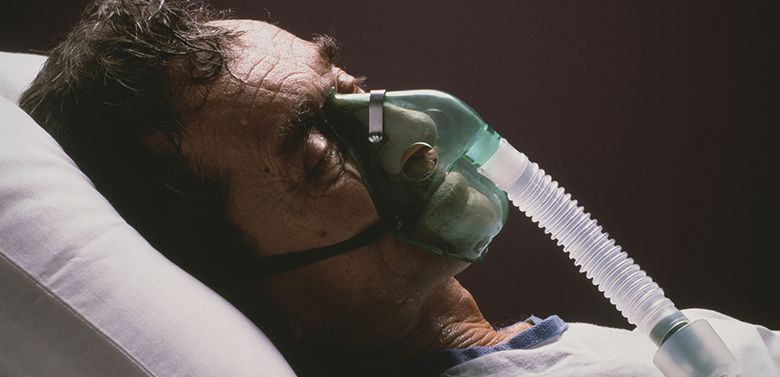Modern-day exposure often results in asbestos lawsuits by individuals who deserve compensation for what this harmful particle has done to them. If you or a loved one have developed mesothelioma or another asbestos exposure-related disease, the Morgantown asbestos and mesothelioma lawyers at Colombo Law can help you determine your legal options and file a claim, if possible.
Asbestos was a crucial ingredient in manufacturing for many years. It was used to make fire-retardant clothes, building products, and construction materials, amongst other things.
Things changed in 1930 however, when a study published by Dr. E.R.A. Merewether showed that asbestos was harmful. Dr. Merewether was able to demonstrate that workers had contracted asbestosis and that exposure to asbestos could cause these symptoms to lie dormant for years without being diagnosed. Just 13 years later, in 1943, the first case of mesothelioma was diagnosed.
The dangers of asbestos were known by the United States Environmental Protection Agency for many decades before they finally banned its use in 1989. Today, asbestos has been phased out of most manufacturing operations, but it’s often present in older materials that are still in use in things like cars and homes.

What is Asbestos?
Asbestos is a combination of six minerals that are commonly found in rock and soil. The asbestos minerals are composed of tiny, sturdy fibers that naturally resist heat and many chemicals. This is one of the reasons asbestos was used in construction materials for so many years. But the same properties that make asbestos a good construction material are the ones that make it deadly to humans.
Because they are so small, asbestos particles can be very hard to identify, whether it is in the air or in someone’s body. Asbestos is odorless and tasteless, and cannot be seen by the naked eye. Someone can easily touch asbestos fibers without knowing it, causing them to enter the air and the lungs of people who happen to be nearby.
Where is Asbestos Found?
Asbestos has been used for so long that it can be found countless places. Asbestos removal efforts are nearly constant, but it can still be found in homes, schools, and workplaces around the country. But asbestos isn’t just found in buildings; it may also be in items like:
- Vermiculite insulation
- Floor and ceiling tiles
- Roof shingles
- House/building siding
- Asbestos based cement
- Insulation, tape, and sheeting used around boilers, electrical units, furnaces, and fireplaces
- Spray on fireproofing products
- Fire resistant cloth/fabric
- Joint compound used around sheetrock
- Asbestos paper and millboard
- Certain kinds of wall and ceiling paints
- Vehicle clutches and brakes
- Public or private water sources
Risk Factors for Asbestos Exposure
The latency period for asbestos is a minimum of 5 to 10 years. So, if you’ve been exposed, you may not know if you have an asbestos-related disease until that period has passed. In certain cases, it can take 40 years or more for the symptoms of mesothelioma or other asbestos exposure-related diseases to become apparent.
Not everyone who is exposed to asbestos will become ill. The likelihood of contracting a disease is based on factors like:
- Duration – How long the individual was exposed to asbestos.
- Concentration – How much asbestos the individual was exposed to and the density of the concentration of the fibers.
- Type of Asbestos – Which variety was involved in the exposure and what the size, shape, and chemical makeup of that variety was.
- Frequency of Exposure – How often the individual was exposed to asbestos over time
- Source – Where the asbestos came from.
- Individual Risk Factors – Whether the individual smoked, had pre-existing lung conditions or was at risk for genetic mutations.
Asbestos-Related Diseases and Symptoms
After the latency period has passed, it is much more likely that a doctor will be able to observe the effects of asbestos exposure and make a diagnosis. Most of the time, this not only requires a medical exam but a series of tests as well.
Asbestos can cause a variety of diseases, but some of the most common are:
Mesothelioma
This is a very rare type of cancer that damages the lining of the lungs, abdomen, and heart and results in 3,000 diagnoses in the U.S. each year. Mesothelioma has no cure. However, there are currently some options that can improve survival odds and prolong the lifespan of those who have been diagnosed.
Most mesothelioma cases are seen in people who have been exposed for many years in workplaces, construction sites, homes, buildings, and schools that were constructed when asbestos use was common. Unfortunately, since our bodies can’t break down asbestos fibers, it is possible for one exposure incident to cause mesothelioma.
There are three main types of mesothelioma:
- Pleural Mesothelioma affects the lungs and is the most common type. It’s seen in about 80 percent of all mesothelioma diagnoses, and its symptoms can include:
- Difficulty breathing
- Prolonged fatigue
- Fevers
- Night sweats
- A hoarse voice
- Low oxygen levels
- Difficulty swallowing
- Fluid buildup in the lungs
- Peritoneal Mesothelioma affects the abdomen and is diagnosed in about 15 to 20 percent of cases. Symptoms of this type of mesothelioma may include:
- Anemia
- Nausea
- Sudden or unexplained weight loss
- Fever
- Loss of appetite
- Blood clots
- Abdominal pain, swelling, and fluid buildup
- Hypoglycemia
- Bowel obstructions
- Pericardial Mesothelioma affects the heart, but it is very rare. It’s only seen in 1-2 percent of cases, on average, and may include symptoms like:
- Shortness of breath
- Coughing
- Chest pain
- Fever
- Night sweats
- Irregular heartbeats and heart murmurs
- Fluid buildup in the heart

Lung Cancer
Asbestos can cause lung cancer on its own, but those who smoke are at a much greater risk. Regardless, if you’ve been exposed to asbestos and notice any of the below symptoms, contact your doctor ASAP:
- Persistent coughing
- Loss of muscle mass
- Shortness of breath or difficulty breathing
- A sudden hoarse or raspy voice
- Persistent cases of respiratory infections, bronchitis, or pneumonia
- Back, chest, shoulder, bone, or joint pain
- Coughing up mucus and/or blood
- Sudden weight loss
- Fatigue or weakness
- Weakened or brittle bones
- Swelling in the neck, face, or lymph nodes
- Loss of appetite
- Blood clots
- Neurological issues like memory loss, equilibrium issues, or a change in mood or demeanor
Asbestosis
This disease is the non-cancerous consequence of asbestos exposure, but it is still a progressive and long-term disease that can permanently scar the lungs. Asbestosis can exist in a person’s body for years without symptoms and, though survivable; it can be deadly.
Asbestosis can also cause other problems like hypertension, heart disease, lung cancer, and mesothelioma. Common early warning signs of asbestosis include:
- Shortness of breath
- Persistent cough
- Chest tightness and pain
- Loss of appetite
- Swollen fingertips
- Nail deformities
Additionally, asbestos exposure has been linked to other cancers and diseases. Doctors and researchers are still investigating these links, but there is evidence that asbestos can have a role in causing or contributing to laryngeal, gastrointestinal, colorectal, breast, prostate, gallbladder, Hodgkin’s lymphoma, non-Hodgkin’s lymphoma, ovarian, leukemia, and kidney cancer.
Get Help NowNo Obligation - 100% PrivateAsbestos-Related Laws
The 1970’s saw many government agencies develop laws to cut down on, and later eliminate asbestos use. Those laws included:
- The Toxic Substances Control Act (TSCA) was passed in 1976 and banned the manufacturing, importing, processing, and distribution of currently-existing products like asbestos flooring felt, asbestos rollboard, spray-on asbestos materials, and certain types of asbestos-containing paper. It also prohibited manufacturers from using asbestos in new products that did not previously contain the substance.
- Occupational Safety and Health Administration (OSHA) Asbestos Standards were updated to protect against asbestos use in a variety of industries and workplaces. These rules mean employers have to provide respiratory protection devices, exposure training, medical screening, and decontaminated break/lunch areas to workers who could be exposed to asbestos.
- The Asbestos Hazard Emergency Response Act (AHERA) requires all education facilities, whether they are public or private, to inspect their buildings for asbestos, develop an asbestos management plan, and do whatever they can to reduce or prevent asbestos exposure.
- The Asbestos School Hazard Abatement Reauthorization Act (ASHARA) gives loans and grants for asbestos removal in schools. It also states that the EPA should increase training for agents of the Asbestos Model Accreditation Plan and provide more training geared towards asbestos abatement in all kinds of buildings.
Avoiding and Combating Asbestos Exposure
Most new homes and buildings don’t contain asbestos, but many older ones do. If your home or place of work is older, you should have an expert come in to test for fibers. They should also be able to inspect your insulation, flooring, and ceiling tiles.
If you find out that your home or place of work is contaminated, you should never attempt to remove the asbestos on your own. Doing so can expose yourself and others, resulting in serious diseases and, ultimately, death. Instead, you should hire one of the many asbestos contractors who have the knowledge needed to do this safely.
Who Could Be Liable for Asbestos Exposure
OSHA standards regulate exposure in the workplace, but there are plenty of employers who ignore these rules. Because of this, if you developed an asbestos-related disease because of exposure at work, you may be able to sue your employer or seek financial compensation from their insurance providers.
If the exposure has occurred in a home that you rent or lease, you may be able to seek compensation from your landlord. If the landlord wasn’t aware of the presence of asbestos, you probably won’t be able to get any money. But, if they did know about the asbestos, or if they avoided inspections designed to discover it, you may be able to take legal action.
Manufacturers can be held liable if they use asbestos in their products and that asbestos results in someone becoming ill. If this has happened to you, you may have a product liability claim against the manufacturer or someone else in the product’s supply chain.
What to Do If You’ve Been Exposed
If the exposure occurs in your home, do not touch the item that you think may contain asbestos. You should also not to let any asbestos-containing items get wet. You should contact a removal professional ASAP to have them remove the item. You should then see your doctor and inform them of the exposure.
If the exposure occurs in your place of work, you must do the following:
- Report your potential exposure to your employer ASAP.
- Go to the doctor immediately. Describe your symptoms and the exposure scenario. Depending on your workers’ compensation rules, you may be able to choose your own doctor, or one may be provided for you.
- If you have been diagnosed, provide your employer with a Notice of Occupational Disease and Claim for Compensation form, along with your medical records.
- Contact a Morgantown asbestos exposure attorney who can help you fight for the compensation you deserve.
Why Should I Hire a Morgantown Asbestos or Mesothelioma Lawyer?
Many of these cases are settled out of court. Unfortunately, some will require you and your attorney to bring your case before a judge and jury to get the money you deserve.
Most companies don’t want to admit that their negligence caused your asbestos-related illness. They will do everything they can to avoid paying your medical bills, pain, suffering, mental anguish and other damages. They may even try to say they aren’t liable by claiming:
- That smoking or drinking caused your health issues
- That another employer should be responsible for your exposure
- That your diagnosis was not correct
- That your family history suggests you had pre-existing health problems that caused your condition
- That your disease was caused by exposure at home, not the workplace
Who you are ultimately able to sue depends on a lot of things. That said, asbestos can destroy your health and your life, and you should not sit idly by if someone else caused your exposure. The asbestos and mesothelioma attorneys at Colombo Law can help you with every aspect of your potential case whether that means settling out of court or going to trial.
Our consultations are free, and we only charge you attorney’s fees if we help you get the money you deserve. Call us at 304-906-2815 to find out if you have a case.










